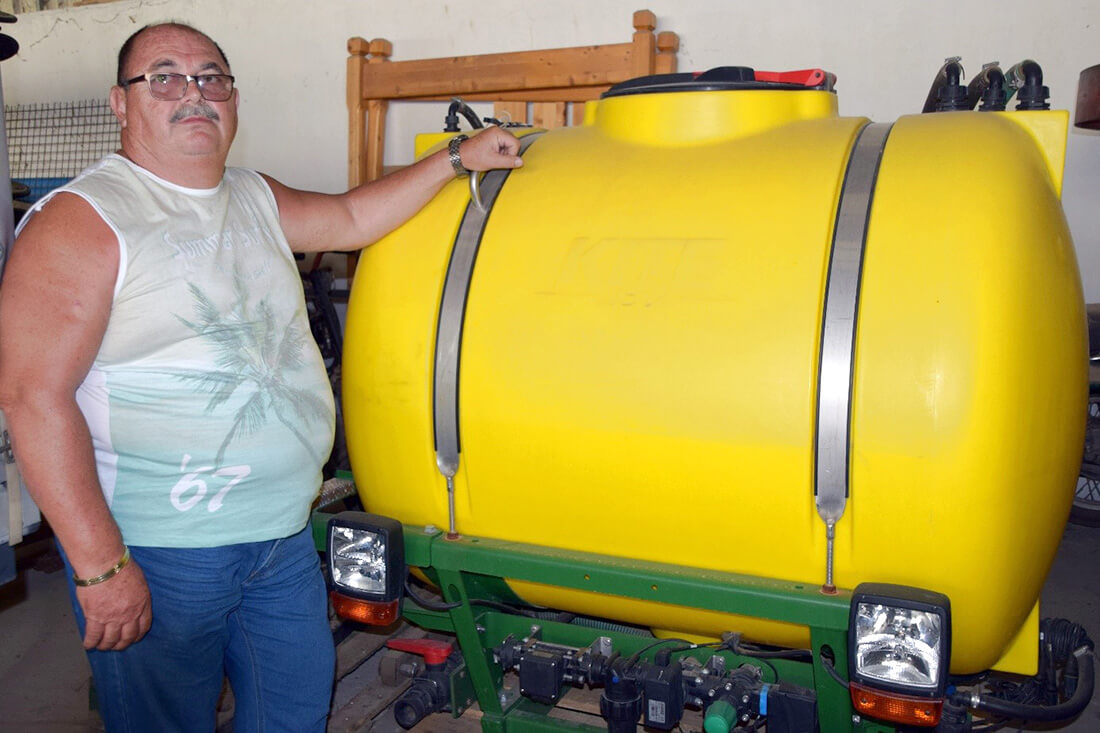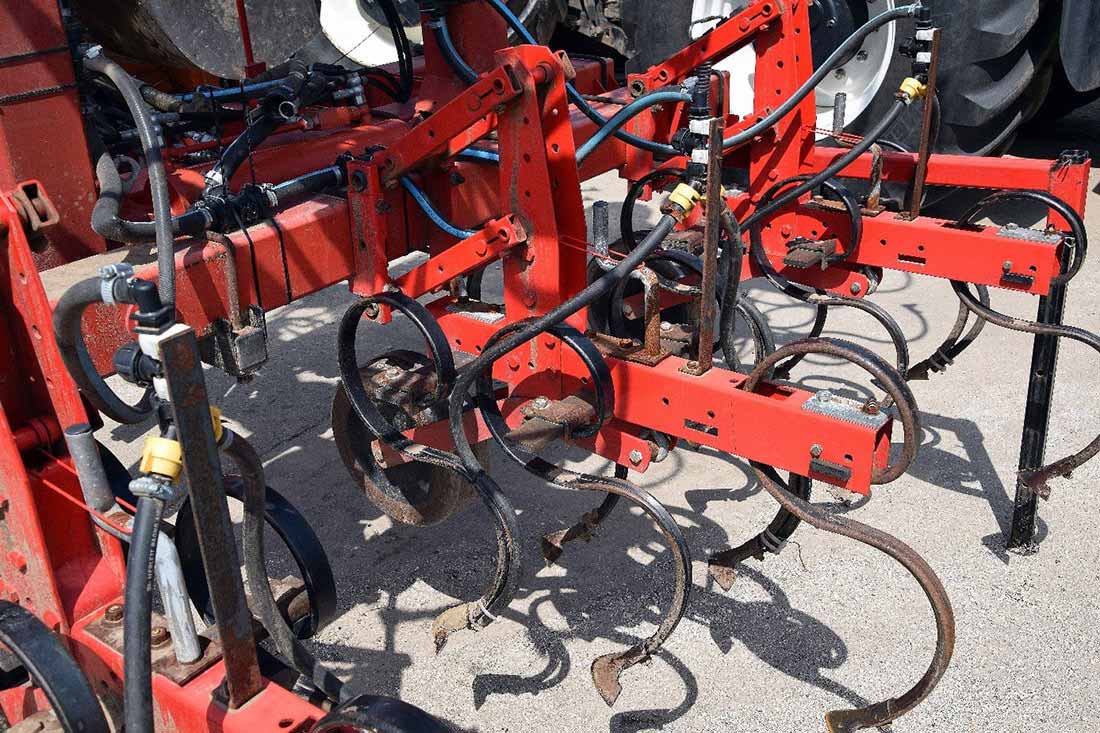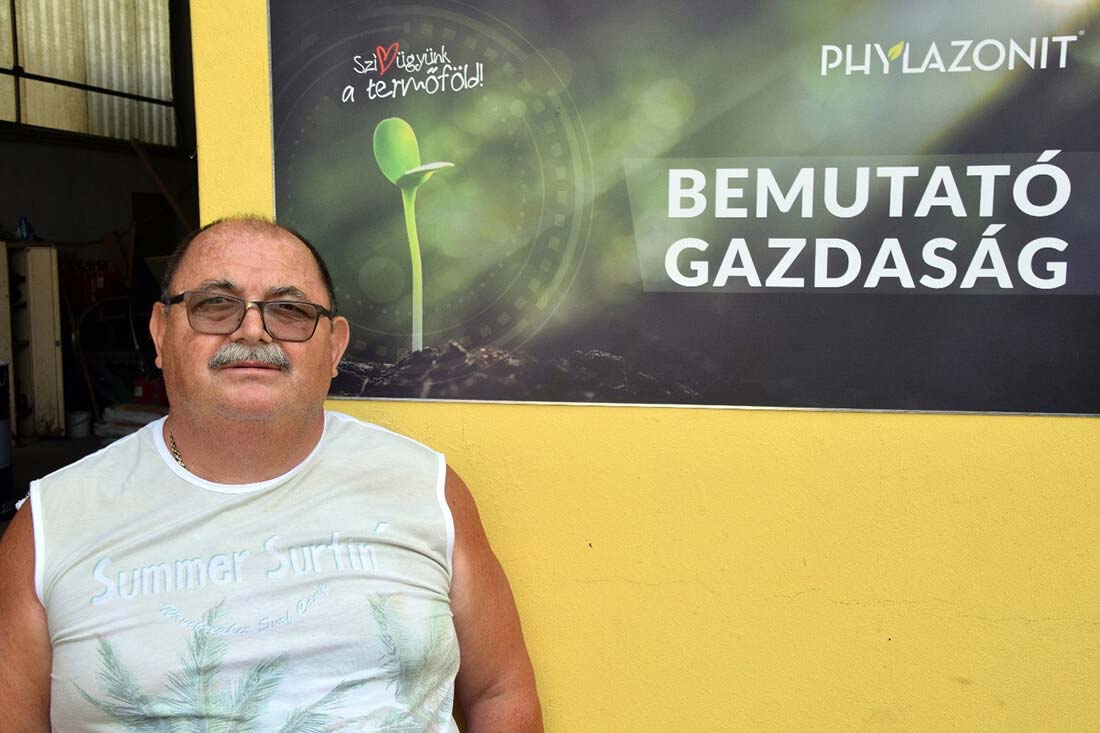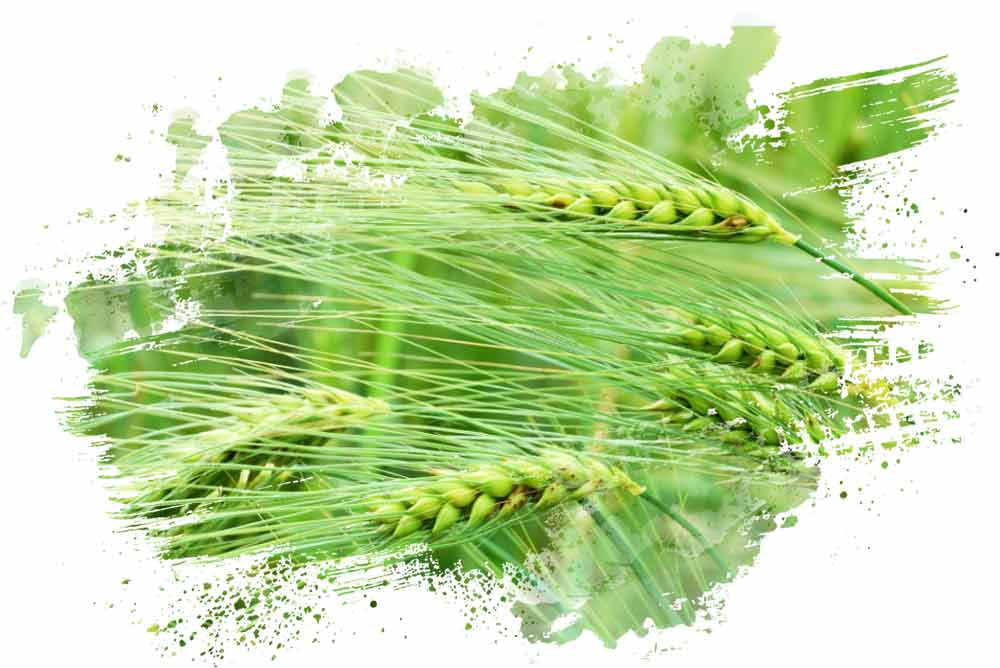The infield really lies at the heart of Phylazonit
“I started farming with my wife after the cessation of former socialist cooperatives, now we run 2 farms together with our two grown-up children, nearly 300 hectares of our own and 400 hectares of leased land with well-equipped machinery fleet. Our areas are in Páty and around the settlements in its vicinity. We grow three common arable crops: wheat, maize and sunflower” – introduced his farm Bálint Kovács
How did you hear about soil bacteria and the Phylazonit product family?
“We started experimenting with bacterial fertilization from the very beginning, we tried the Phylaxia product which later became Phylazonite. Although measurements were not really carried out 25-30 years ago, the positive effect of the bacteria was visible but somehow its application dropped out over time.
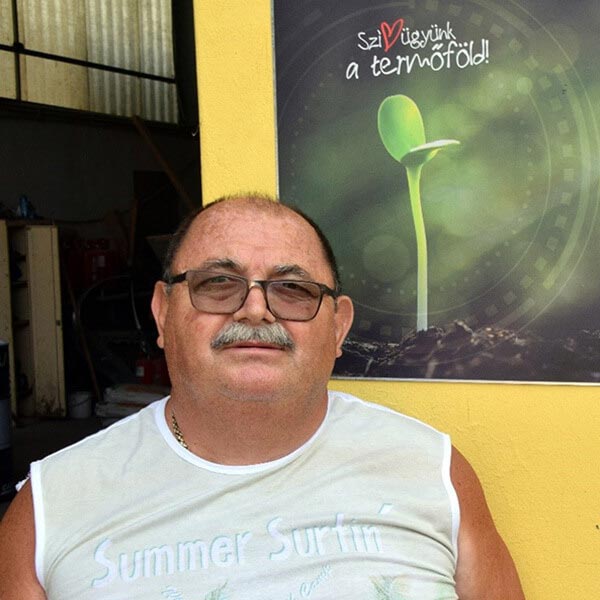
Actually, we started to deal with the subject more seriously 6-7 years ago, we saw the need to cultivate and revitalize the soil; there were less and less earthworms, and because there was no stock of organic fertilizers we thought we had to deal with soil bacteria more seriously. As I mentioned, we already had good experience with Phylazonit through Phylaxia, so we contacted them and started working together.”
What products do you use from the Phylazonite palette? And what is your experience with these products?
“I currently use the Phylazonit Soil Inoculant and Stubble Decomposer. We started using the Soil Inoculant 6-7 years ago on maize and the Stubble Decomposer is in use since last autumn. As far as the Soil Inoculant is concerned, when we have a droughty year, we notice that our maize responds to stress much better; sometimes neighboring farmers asked us: ‘what do you do with your maize? Yours is so beautiful and green while our corn leaves are rolling!’
Of course, over the years, we have delved into the subject, and today, we have introduced Phylazonit technology throughout our farm, in which the company’s experts have been of utmost help. We chose Stubble Decomposer because we were shocked to see there was still crop residues after the third year. We knew we had to do something about it. Wheat is sown after sunflower, and since the cultivator does not plough, it is clear that although some stalk remains are left, degradation has begun very quickly. Certainly, this year’s seemingly good harvest includes the provision of a well decomposed stubble.”
How many machines are equipped with Applicator?
“Currently, we have three machines with Applicators, one of which is on the seedbed maker which is used when we prepare the seedbed for wheat so we can deliver the bacterial fertilizer in one pass. Last year, with the help of Horsh and Phylazonit, we managed to test ‘a machinery combination’: Horsch provided the field cultivator, and Phylazonit provided the bacterial applicator. They may debut this year, depending on what the wheat will look like, but the culture is already beautiful. So, this technology has been proven, bacterial fertilization has been successful, and the Stubble Decomposer is delivering the expected results. I was also happy about this combination as it helps me to get things done on time. My drill was equipped with an Applicator by us so we can apply the Soil Inoculant in one pass. Last spring, we also purchased a KITE JET fluid delivery system which allows us to apply bacteria at speed rate.”
Can you summarize why you are opting for Phylazonit products?
“Something has to be done about degrading soil life. Thanks to a longstanding professional relationship, I have an insight into Phalyzonit’s everyday life and I opt for them for many reasons. On one hand, they work with bacterial strains isolated from local soils, on other hand, they have a strong research base and laboratory background. Last but not least, their products are already proven.”
Could you tell me some specifics?
“It’s important to note that I look at everything in a complex way. There are some very good years when we can honestly say that even flaws are negligible. Our soils are well-filled with nutrients and besides, we strive for precision farming. As I have said about maize, drought tolerance is very spectacular and it can withstand the stress of the weather since I’ve been using Phylazonit Soil Inoculant. I remember three years ago we went through major droughts, and yet my maize was beautiful and my yields were good. For wheat, this will be the first year I have applied the compound and I hope that together with Stubble Decomposer I get the result. In the case of sunflower, however, the question of varieties comes up when it comes to decision but one thing is certain: last year I had non-oleic sunflower and yet we predicted 51% oil content. I’m sure Phylazonit soil bacteria played a big part in that. In droughty years I have no worse yield than 3.5 tons.”
What do you think of the Phylazonit team?
“I hope it sounds positive enough that we signed a multi-year contract this year, and we also became a Phylazonit demonstration farm where various experiments are constantly monitored by their experts and they retrieves data too. We definitely want to work with them in the long run. I wholeheartedly recommend Phylazonit products to every farmer because their slogan is absolutely true: The infield really lies at our heart!”
Nárcisz Kalmár

